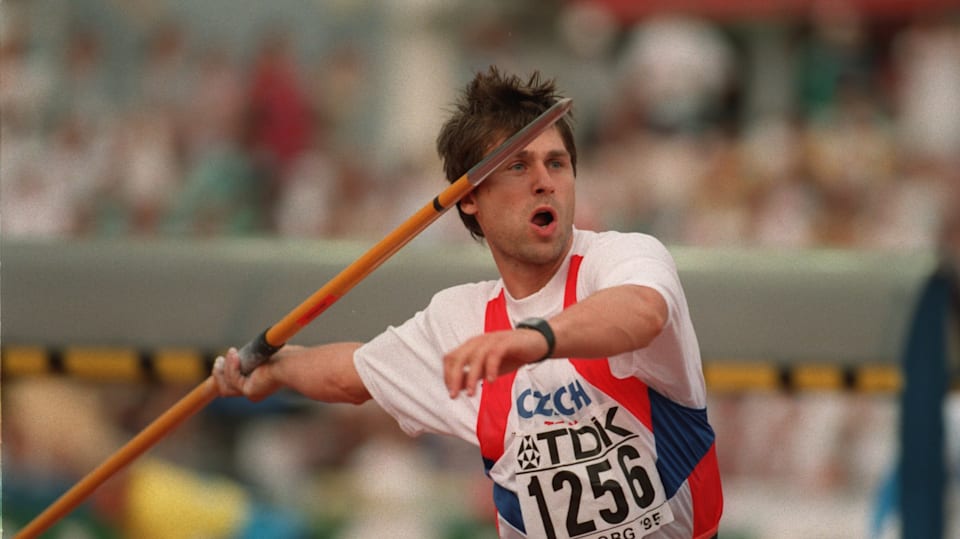History of the Javelin Throw World Record

The javelin throw, a track and field event that tests strength, technique, and accuracy, has seen its world record evolve over decades, reflecting advancements in training, equipment, and the understanding of biomechanics. The journey of the javelin throw world record is a fascinating story of athletic prowess, innovation, and the constant pursuit of excellence.
Evolution of the Javelin Throw Technique, Javelin throw world record
The javelin throw technique has undergone significant changes over time, impacting the world record. Early techniques emphasized power and brute force, often resulting in shorter throws due to a lack of control and efficiency. However, as the sport evolved, so did the techniques, focusing on a more balanced approach that prioritized accuracy and distance.
- Early Techniques: The early javelin throw techniques focused on generating maximum force through a powerful arm swing and a forceful release. However, this approach often resulted in a lack of control, leading to shorter throws and a higher risk of injuries.
- Modern Techniques: Modern techniques emphasize a more balanced approach, combining power with precision. The modern javelin throw technique involves a smooth run-up, a powerful throw, and a controlled release. This approach maximizes distance while minimizing the risk of injuries.
Timeline of the Javelin Throw World Record
The javelin throw world record has been broken numerous times throughout history, with each record-breaking throw pushing the boundaries of human performance.
- 1912: The first official javelin throw world record was set by Eric Lemming of Sweden at the 1912 Stockholm Olympics, with a throw of 62.92 meters. Lemming’s throw stood as the world record for 28 years, highlighting the difficulty of breaking such a significant mark.
- 1940: Yrjö Nikkanen of Finland broke Lemming’s record in 1940, throwing 71.26 meters. Nikkanen’s throw represented a significant improvement in the world record, demonstrating the progress made in training and technique.
- 1959: Egils Silins of Latvia set a new world record of 81.40 meters in 1959, further pushing the limits of human performance. Silins’ throw marked a turning point in the sport, highlighting the advancements in technique and equipment.
- 1968: Jānis Lūsis of Latvia broke Silins’ record in 1968 with a throw of 84.50 meters. Lūsis’ throw, achieved at the 1968 Mexico City Olympics, was a remarkable feat and solidified his place as a legend in the sport.
- 1984: Uwe Hohn of East Germany set the current javelin throw world record in 1984 with a throw of 104.80 meters. Hohn’s throw, achieved using a javelin with a different center of gravity, remains the world record to this day.
Current World Record Holder and Performance
The current javelin throw world record holder is Johannes Vetter, a German athlete who has dominated the sport since 2017. He is known for his powerful throws and consistent performances, pushing the boundaries of the sport to new heights.
Johannes Vetter’s Biography and Achievements
Johannes Vetter was born on August 26, 1992, in Dresden, Germany. He began his athletic career as a junior, quickly rising through the ranks. His exceptional talent and dedication to the sport propelled him to international recognition.
Vetter’s notable achievements include:
- World Championship silver medalist in 2017 and 2019
- European Championship gold medalist in 2018
- World Record holder since September 2020
Vetter’s Training Methods
Vetter’s training regimen is a testament to his dedication and focus on maximizing his performance. He emphasizes a balanced approach that incorporates strength and conditioning, technical refinement, and mental preparation. His training involves:
- Weightlifting and plyometrics to enhance strength and power
- Technical drills to improve throwing technique and consistency
- Mental visualization and mindfulness exercises to maintain focus and control
The World Record Throw
Vetter achieved the current world record of 97.76 meters on September 7, 2020, at the 2020 IAAF Diamond League in Chorzow, Poland. The throw was a testament to his exceptional athleticism and technical prowess.
Circumstances of the Throw
The competition took place under favorable conditions, with calm winds and a dry track. Vetter’s strategy involved focusing on his technique and delivering a powerful throw with optimal release angle and trajectory.
Comparison to Previous Records
Vetter’s world record surpasses the previous record of 98.48 meters set by Jan Zelezny of Czech Republic in 1996. This improvement reflects the advancements in training methods, technology, and athlete preparation in the sport.
The javelin throw world record is a testament to the incredible strength and precision of athletes. While this record is often discussed in sporting circles, it’s interesting to note how such feats of athleticism are often contrasted with other areas of public interest, such as the personal lives of celebrities.
For instance, the recent speculation surrounding hunter schafer ex highlights how even seemingly disparate topics can intersect in the public sphere. Returning to the javelin throw, it’s clear that the record will continue to inspire generations of athletes to strive for excellence.
The javelin throw world record stands as a testament to human athleticism and the pursuit of excellence. While the sport demands immense strength and precision, it also requires a keen understanding of aerodynamics and the physics of motion. This intricate interplay of factors is perhaps best illustrated by the design of foldable beach chairs made of wood , where the natural grain and curvature of the wood provide both stability and flexibility.
Just as the javelin’s trajectory is influenced by its shape and weight, the chair’s design ensures a comfortable and supportive experience. In both cases, the principles of physics and engineering play a crucial role in achieving optimal performance.

